Ukadiche modak is a traditional Indian sweet that is said to be Lord Ganesha's favorite dish, and it's easy to see why. With a soft and chewy rice flour exterior and a sweet coconut and jaggery filling, modaks are a perfect combination of flavors and textures.
In this recipe, I'll show you how to make these delicious treats right in your own kitchen. I have included all the troubleshooting techniques you need to ensure your modaks turn out perfectly every time.
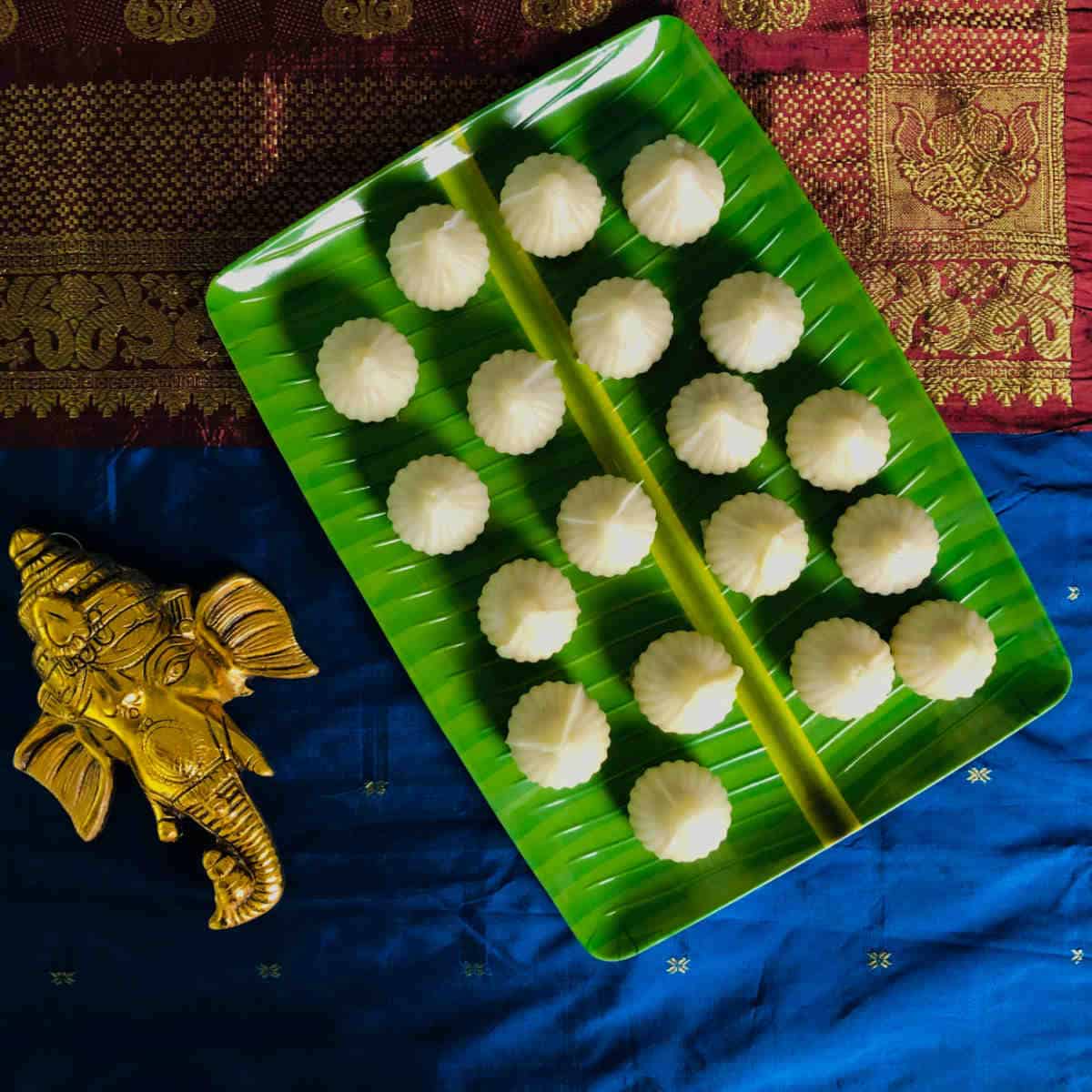
What is modak?
Modak is a traditional sweet that resembles dumplings and is believed to be Lord Ganesha's favorite dish in Hindu mythology. It is a Maharashtrian delicacy made with rice flour and filled with a mixture of coconut and jaggery. Modak is known by different names, such as modaka in Kannada, modakulu in Telugu, and modhakum in Tamil. The dish can be prepared using two cooking methods - steaming or deep-frying. During Ganesha Chaturthi, it is the most important offering to Lord Ganesha.
The word "ukadiche" means steamed, and the recipe I am sharing here is for steamed modaks. The outer covering is made of rice flour, and the filling is made with coconut and jaggery. The outer cover of fried modak is made using all-purpose flour, while the filling remains almost the same. Also, check out this recipe to make panchamrut for Ganesh Chaturti.
Why you will love this recipe?
- Simple ingredients: This authentic and traditional modak recipe requires just a few simple ingredients that are easy to find.
- Detailed instructions: To help you make perfect modakas for your Ganesh Chaturthi festival celebrations, I am including step-by-step instructions and all the tips, tricks, and FAQs you will need.
- Delicious filling: The sweet filling made with grated coconut and jaggery is what makes modaks so delicious. It has a rich, caramel-like flavor that complements the soft and chewy texture of the rice flour dough.
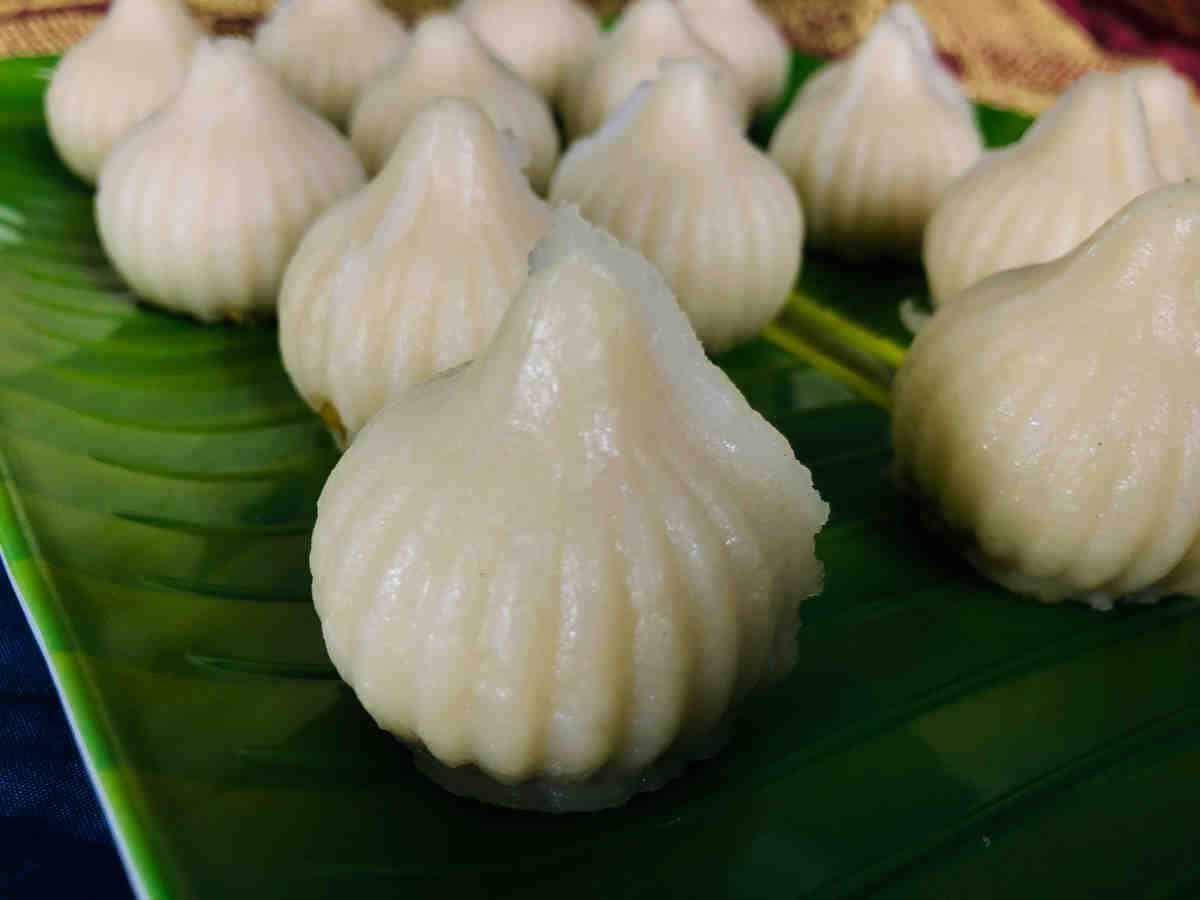
Lord Ganesha's Favourite Food
Lord Ganesha is commonly referred to as 'modakapriya', which means one who loves modaks. As with most Indian festivals, Ganesha Chaturthi is also celebrated with an abundance of food, and modak is a mandatory offering to Lord Ganesha. It is believed that offering 21 modaks to Lord Ganesha is incredibly auspicious.
According to Hindu mythology, Goddess Parvati was once presented with a modak by the Devas and was told that the person who ate it would become the most knowledgeable. Parvati wanted to present it to both her sons - Karthik and Ganesha; however, the brothers were not ready to share the modak. So Lord Shiva and Parvati presented a contest to them and said the person who first completes three rounds of the world will get the modak. Lord Karthik immediately took his 'vahana' (vehicle), a peacock, and began to make the rounds. However, Lord Ganesha took three rounds of his parents and said that this was the whole world for him. Impressed by this, Parvati gave him the modak and it has been his favorite ever since.

Ingredients
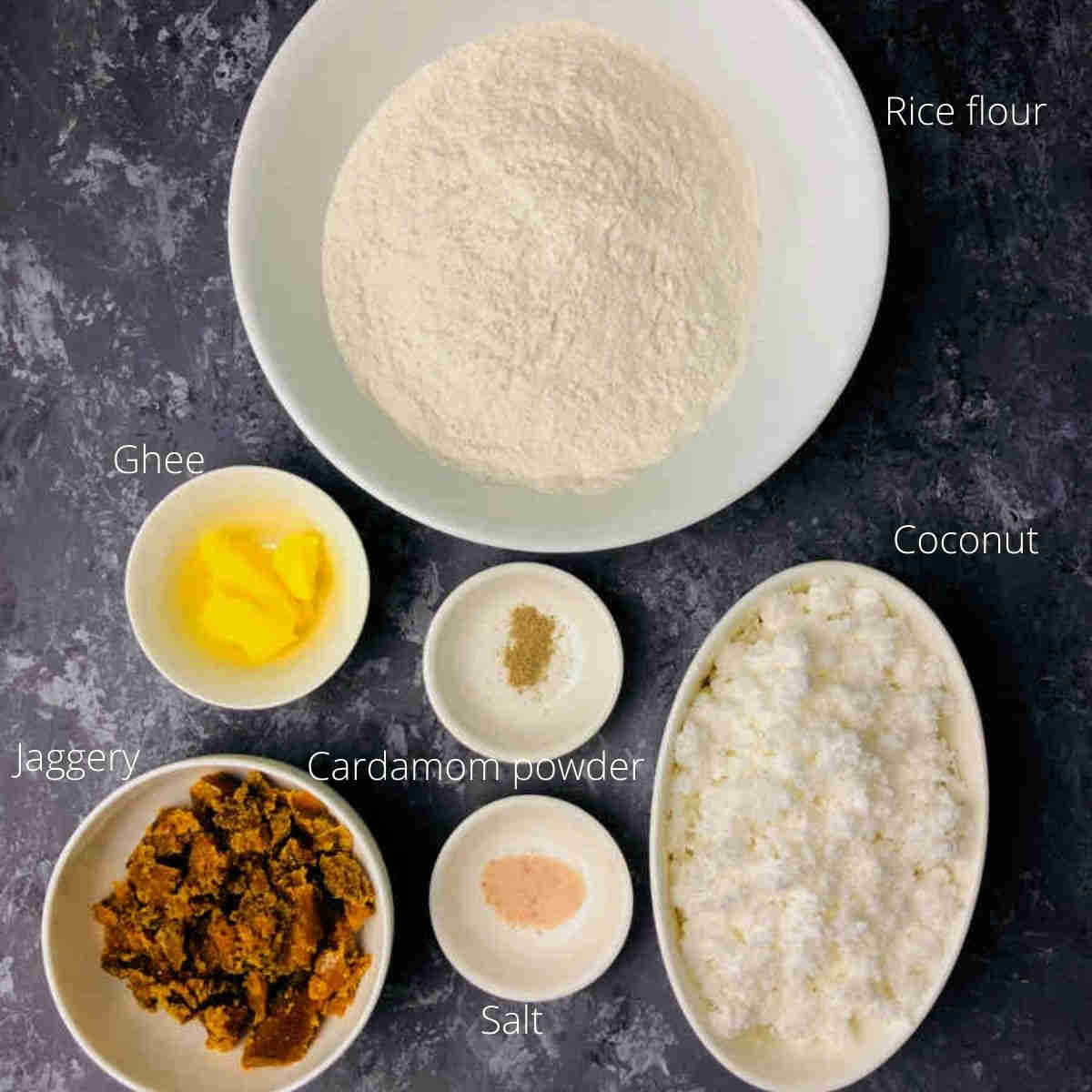
Rice flour: I use homemade rice flour in this recipe. However, store-bought rice flour can also be used.
Coconut: Use freshly grated coconut.
Jaggery: This refined sugar-free modakum is sweetened with jaggery.
Cardamom powder: This is an optional ingredient; however, I highly recommend using cardamom powder as it adds a beautiful aroma to the dish.
Ghee: A small amount of ghee is used in the making of the filling.
Step-by-step instructions
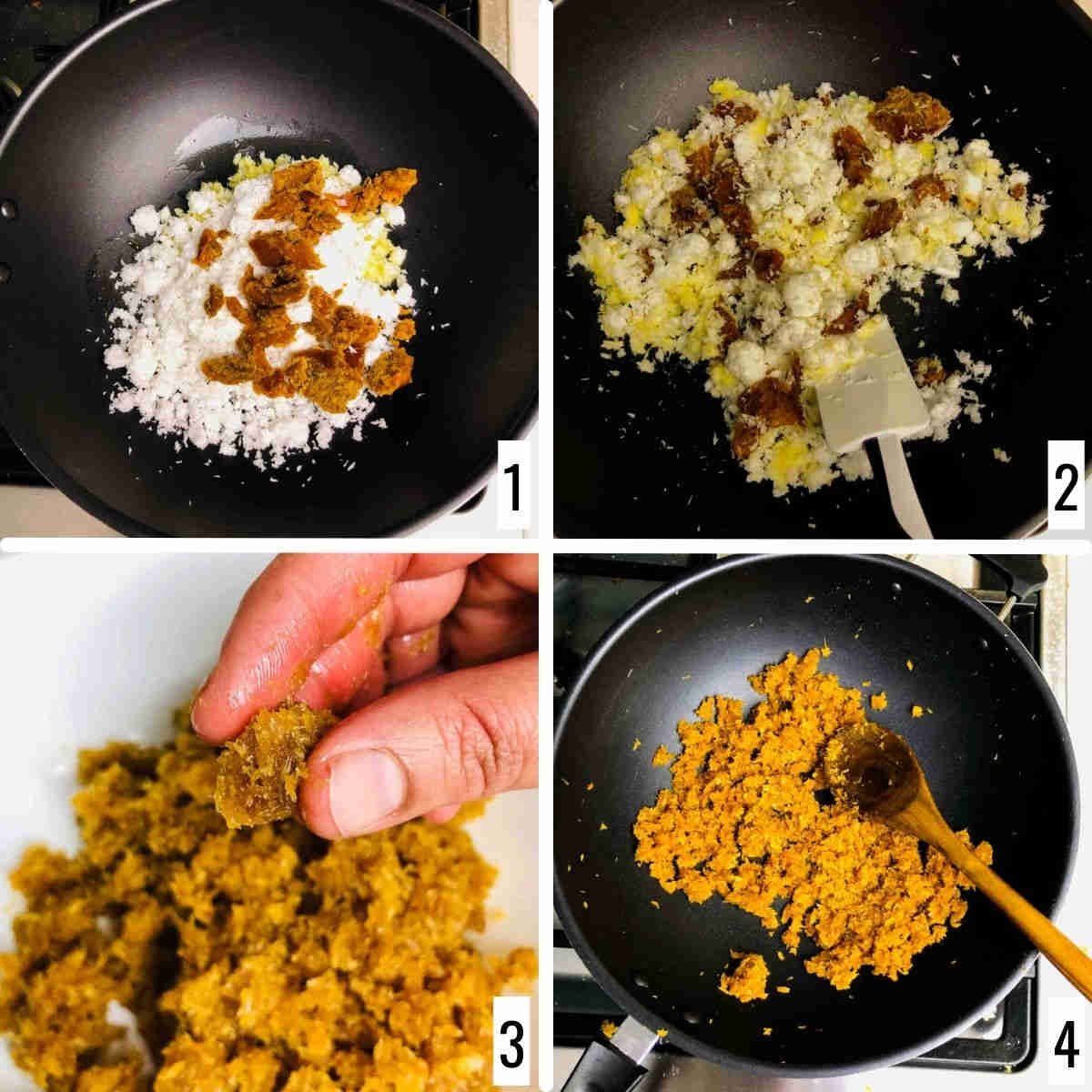
Step 1: Heat ghee in a heavy bottom pan or kadhai. Add fresh coconut and jaggery. Keep stirring until the mixture thickens and comes together (images 1 and 2).
Step 2: Check if the mixture is done by rolling a small portion into a ball (image 3).
Step 3: Add cardamom powder and mix well. Let the coconut jaggery filling cool completely (image 4).
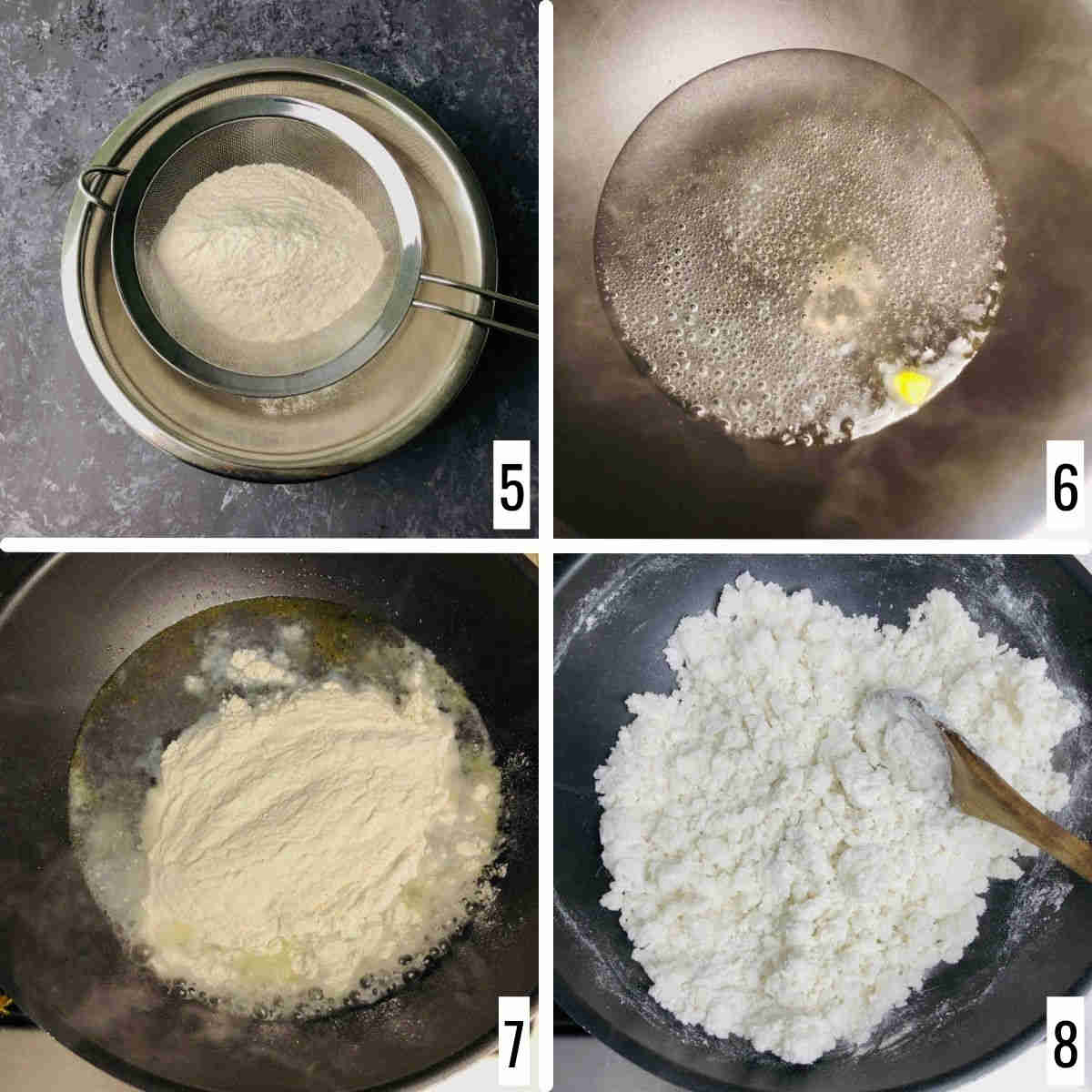
Step 3: Sieve the rice flour. Add water to a wide pan and bring it to a boil. Once it comes to a rolling boil, add salt and ghee (images 6 and 7).
Step 4: Reduce the heat and add the rice flour. Mix well until all the water is absorbed. Cover and let it rest for 5 minutes (images 7 and 8).
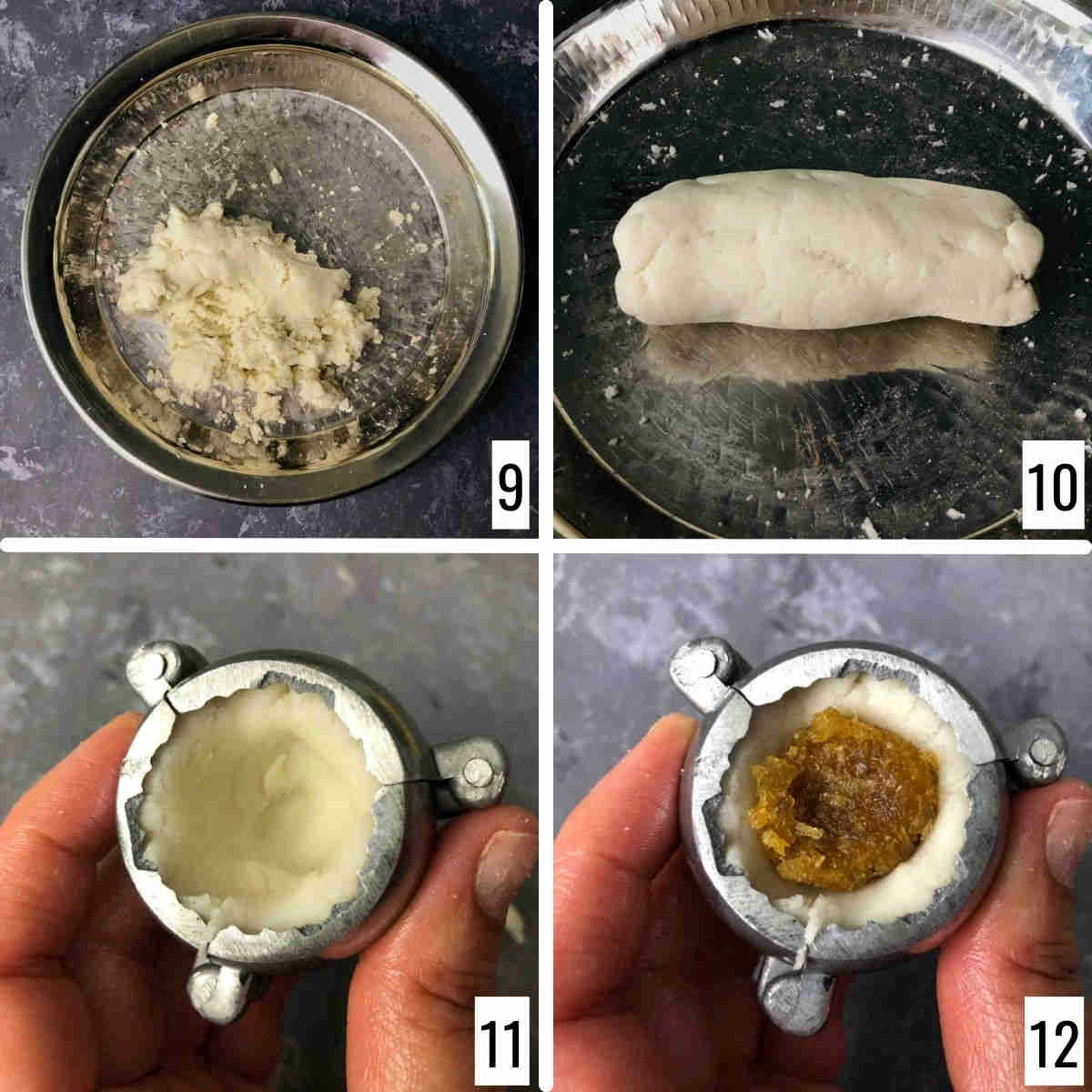
Step 5: While the flour is still warm, transfer it to a wide plate and being kneading the dough. Continue kneading for 5-6 minutes until it is soft and pliable (images 9 and 10).
Step 6: Add some dough to the mold and press it to the wall of the mold, creating a dent in the middle. Add 1 tablespoon filling in the center (images 11 and 12).
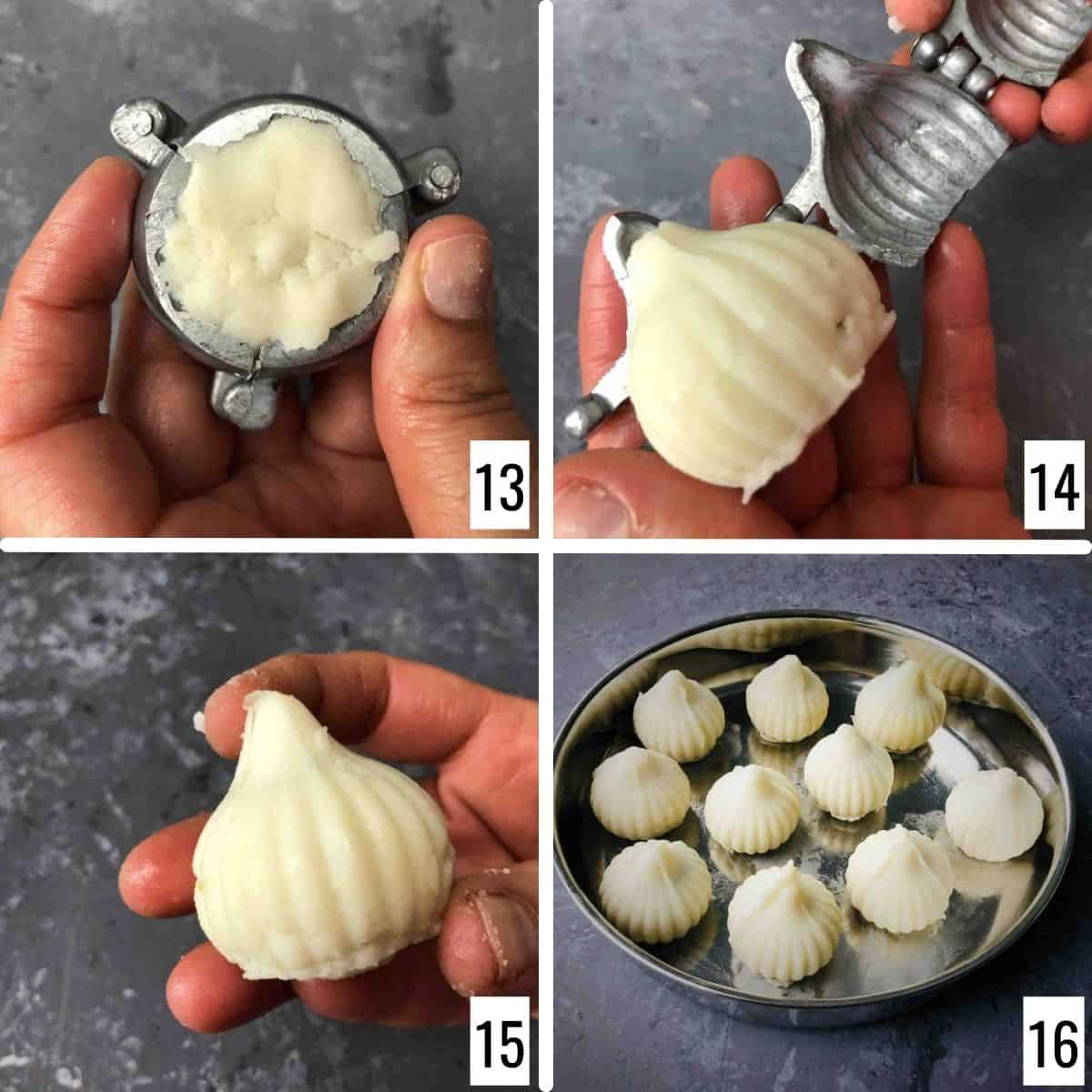
Step 7: Add some dough on top of the filling and press it gently to seal completely (image 13).
Step 8: Unmold the modak and place it on a steamer plate (images 14 and 15). Repeat with the remaining dough and filling to make modakams (image 16).
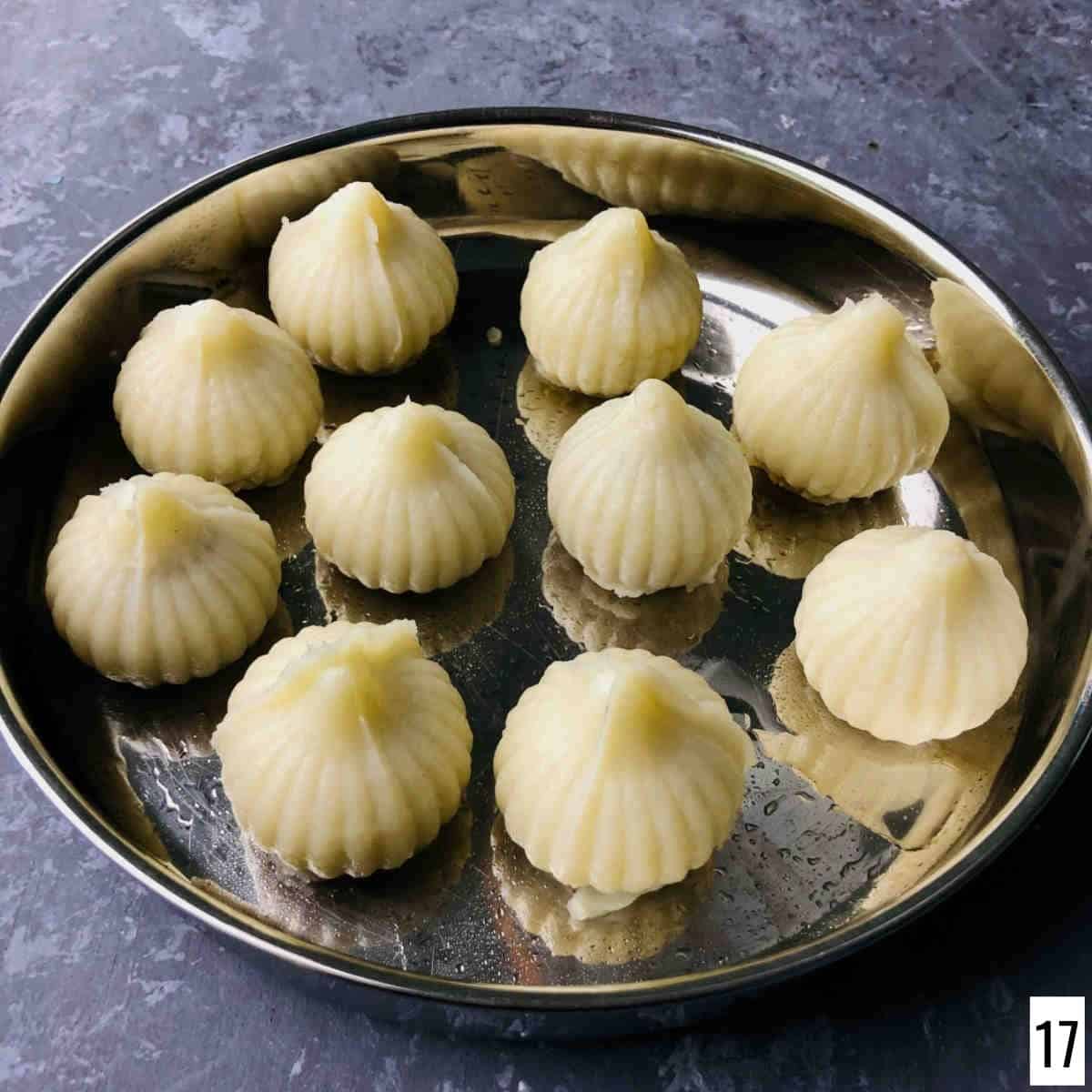
Step 9: Steam them for 10 minutes or until they are shiny and glossy (image 17).
Expert Tips
The rice flour used must be very fine. It is best to sieve the rice flour to make sure there are no big chunks. This is an optional step if you are using very fine rice flour.
Water and rice flour have to be in equal amounts. Use a standard measuring cup to measure them. It may take 2-3 tablespoon more water to shape the dough, but definitely not less. Do not reduce the amount of water. If the water is less while kneading, add one tablespoon of warm water at a time and knead. Do not add cold or room temperature water.
Make sure the water has come to a rolling boil before adding the rice flour. Let the flour sit for 5-7 minutes.
It is important to knead the dough while it is still warm. But the shaping can be done even after the dough cools down.
Keep the dough covered when shaping so that it doesn't dry out. Even if it dries out, don't add more water. Just wet your hands when shaping the dough.
The coconut mixture has to be thick and without any moisture content. To check if it is ready, take a small portion of the mixture and roll it. It should come together and form a ball. If it falls apart, continue stirring for a few more minutes and check again.
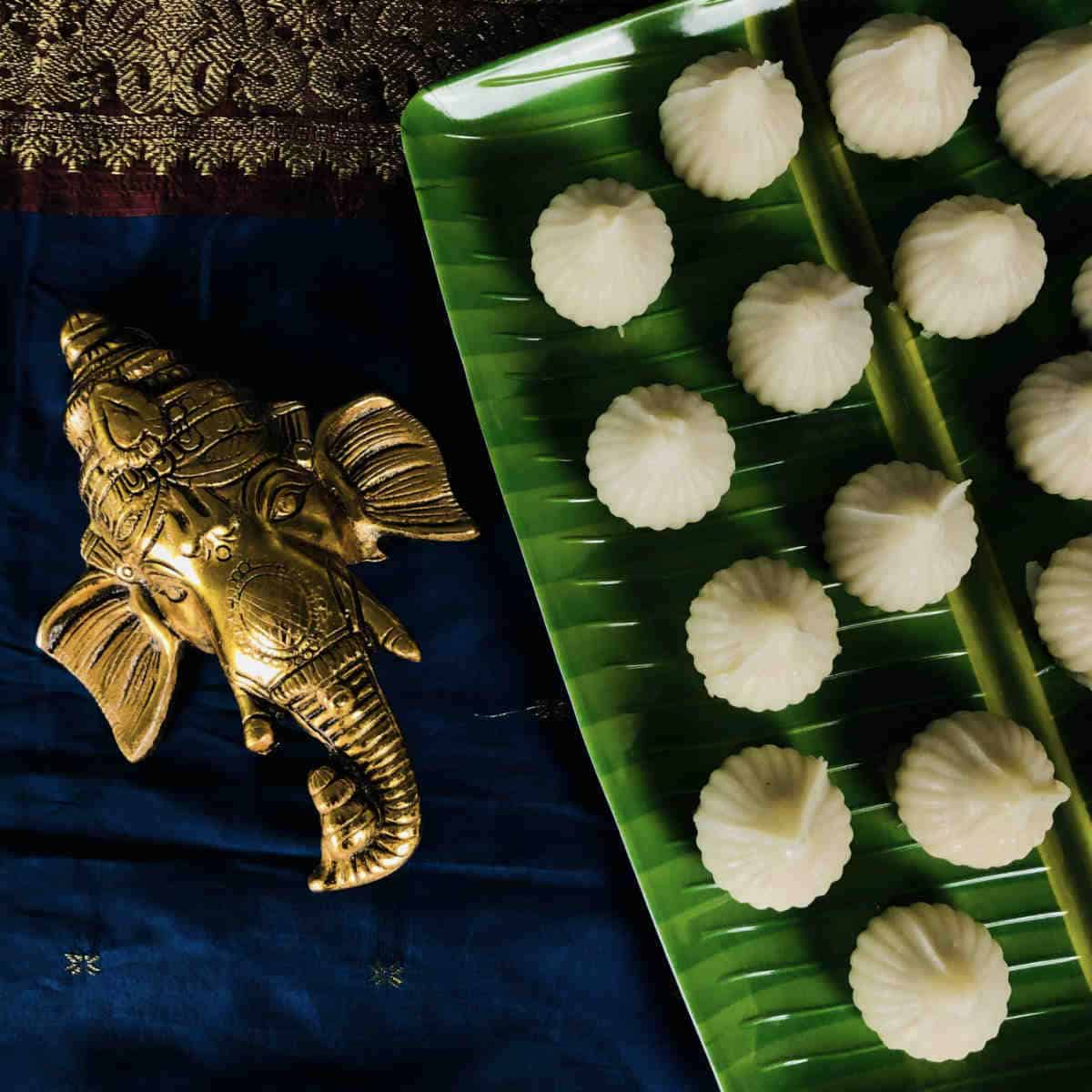
Recipe FAQs
The rice flour dough will crack during shaping if the dough is too dry. If this happens, add 1 tablespoon warm water at a time and knead the dough again.
This happens if the amount of rice flour is less than water. Always use 1:1 rice flour and water. Measure them using the same measuring cup.
Very fine rice flour must be used. I use homemade rice flour. Store-bought ones can also be used. It is best to sieve it before using it.
The modakas can be stored in the refrigerator for up to three days. You can leave them at room temperature if you are consuming them on the same day. To reheat them, place them in a steamer for 4-5 minutes.
I have not tried it using dry coconut. But if you use dry or desiccated coconut, it is best to add some water when cooking the filling.
The coconut filling will become hard if the jaggery hardens. If this happens, place the filling on low heat for a few minutes so that the jaggery melts.
The mythology story behind this: Lord Shiva, Goddess Parvati, and Lord Ganesha once visited Rishi Atri and his wife Anusuya. Anusuya said that she will serve Lord Shiva only after she satiates Lord Ganesha's hunger. Despite many delicacies, Lord Ganesha's hunger was not satisfied. That is when Anusuya fed him a sweet and Ganesha burped showing he was satisfied. Hearing his burp, Lord Shiva burped 21 times indicating he was satisfied too. Parvati then asked Anusuya about the sweet and learned that it was modaka that satisfied Ganesha's hunger. Goddess Parvati then wished that Lord Ganesha should be offered 21 modaks.
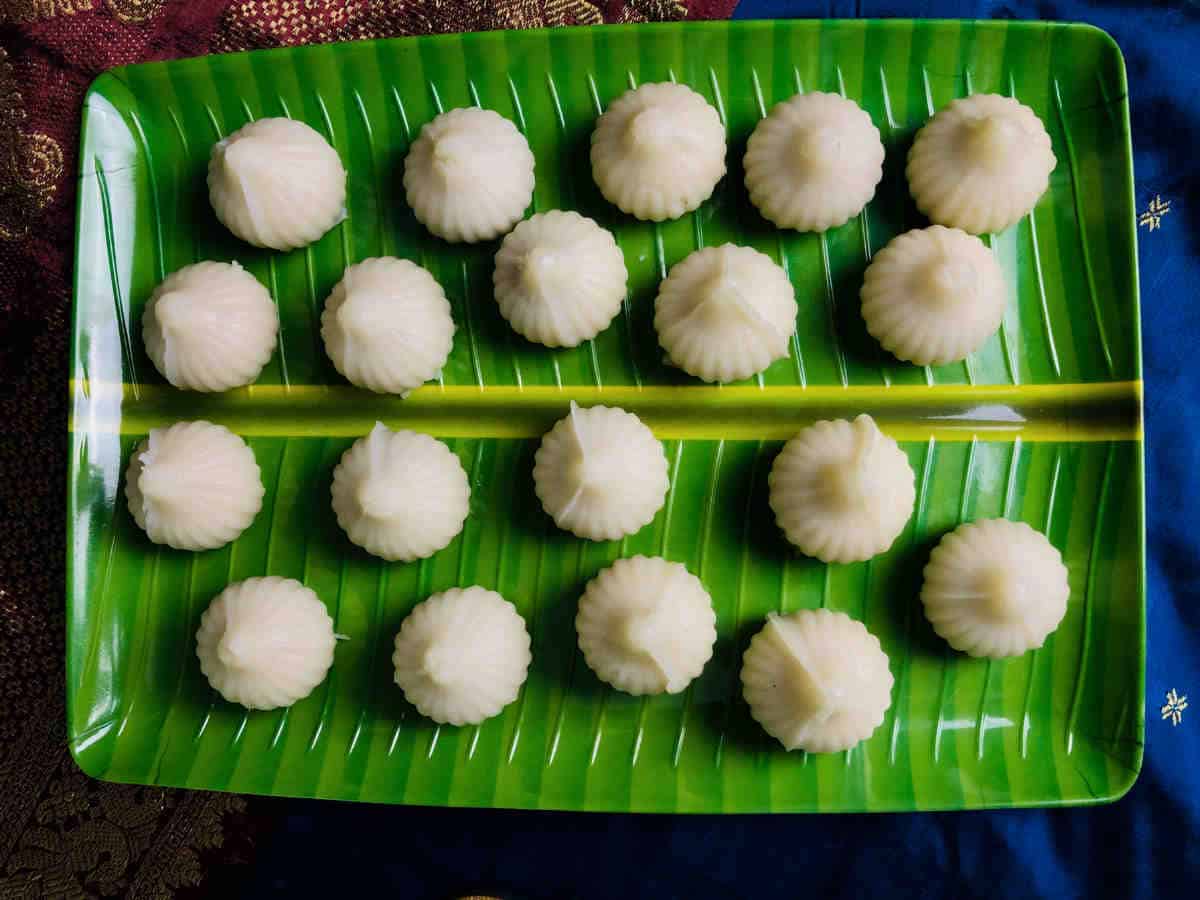
More modak recipes
If you tried this Modak Recipe or any other recipe on my website, please leave a ? star rating and let me know how it went in the ? comments below.
Recipe card

Ukadiche Modak (Steamed Modak)
Ingredients
For the filling:
- 2 cups coconut
- 1 cup jaggery
- 1 tablespoon ghee
- ½ teaspoon cardamom powder
For the outer cover:
- 2 cups rice flour
- 2 cups water
- ½ teaspoon salt
- 1 teaspoon ghee (use store-bought or homemade ghee)
Instructions
To make the filling:
- Place a heavy bottom pan or kadhai on medium heat and add ghee.
- Add coconut and jaggery. Mix well. The jaggery will melt making the mixture slightly moist.
- Keep stirring the mixture until it thickens and comes together. This may take around 15 minutes.
- To check if the coconut is done, take a small portion and roll it using your fingers. It should come together like a ball and hold the shape.
- Turn off the heat once the coconut mixture is done. Add cardamom powder and mix well. Let it cool completely.
To make the dough:
- Add water to a large pot or saucepan and bring it to a rolling boil.
- Once the water, add salt and ghee.
- Reduce the heat and add the rice flour. Mix well until all the water is absorbed.
- Cover and let it rest for 5 minutes.
- While the flour is still warm, transfer to a large pan and begin kneading.
- Continue kneading for 5-6 minutes until it is soft and pliable.
- The dough is ready. Keep it covered with a damp cloth to prevent it from drying out.
Shaping using mold:
- Lightly grease the modak mold with little ghee and close the mould.
- Add some dough into the mold and press it firmly to the wall. You may need 2-3 tablespoons of dough depending on the size of the mold.
- Make sure the entire mold is covered and there is a gap in the center for the filling.
- Add 1-2 tablespoons of filling in the center (adjust the amount of filling depending on the size of the mold).
- Add some dough on top of the filling. Press it gently and seal it.
- Unmould and place it in a steamer basket.
Shaping without mould:
- Take approximately 3 tablespoons of the dough and make a dent in the center.
- Using your finger and thumb, start flattening it gently, moving the dough in a circular motion. Pinch the sides using your thumb and finger to create pleats.
- Add 1-2 tablespoons of coconut filling in the center. Gently bring the pleats together and seal them carefully.
- Place it in the steamer basket for steaming.
Steaming:
- Pour 2 cups of water into the steamer and bring it to a boil.
- Place the steamer basket and steam the modak for 10 minutes.
- Turn off the heat and remove the basket from the heat. Let the modaks sit for 5 minutes before transferring them to a plate.
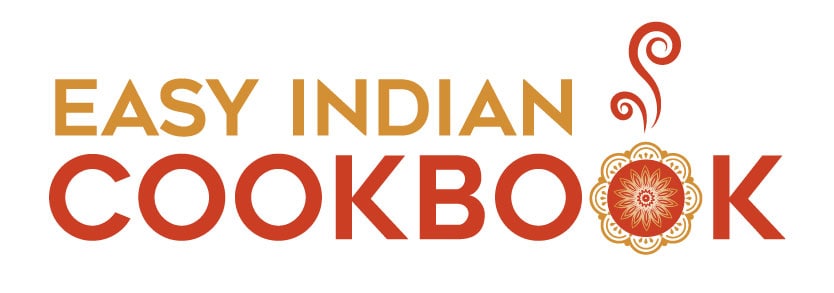
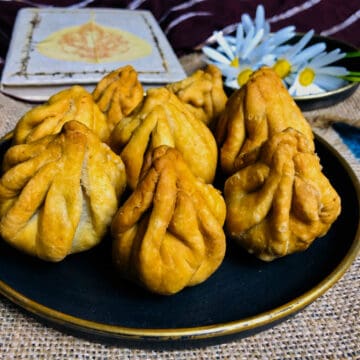
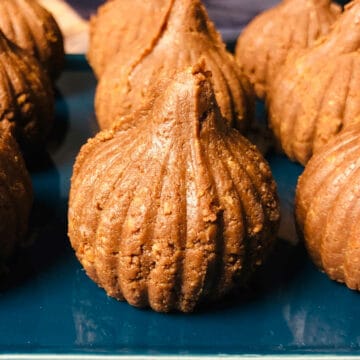
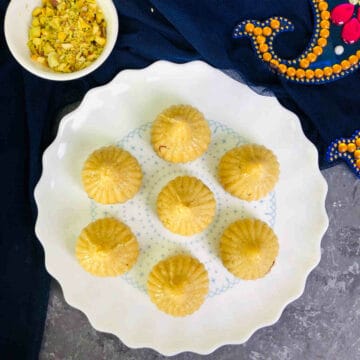
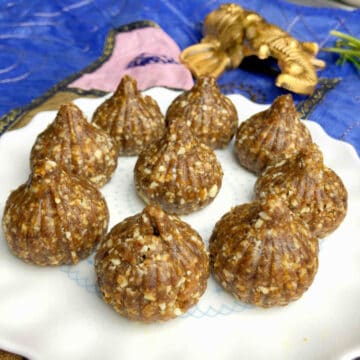
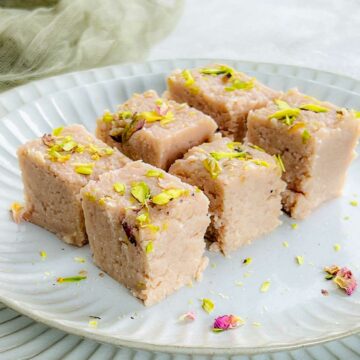
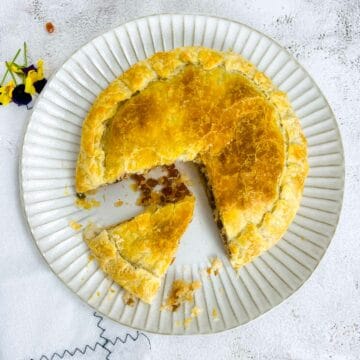
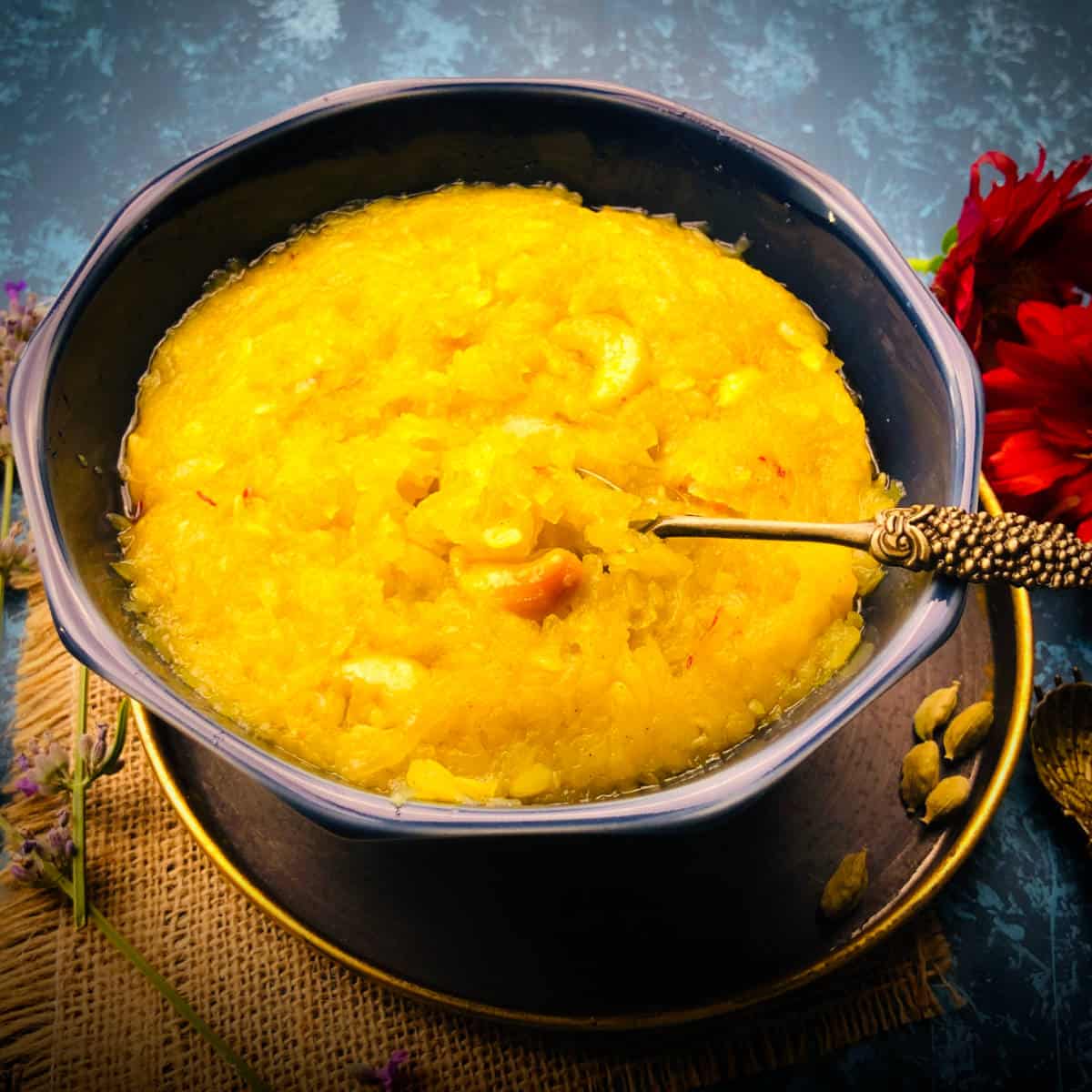
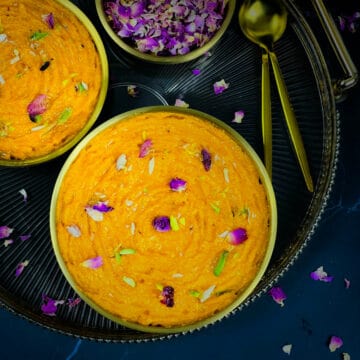
Comments
No Comments